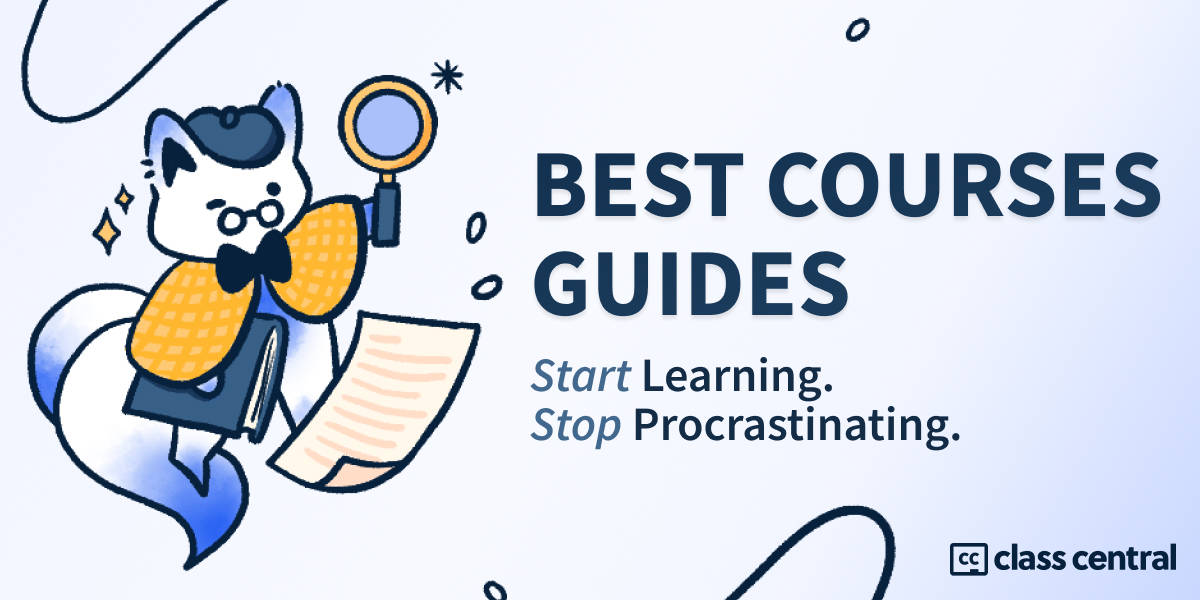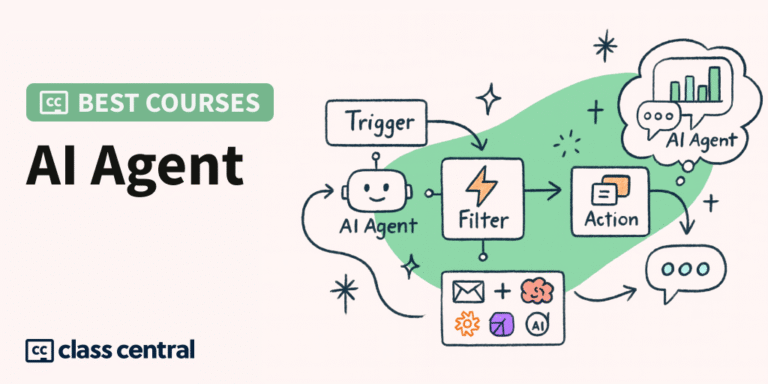

Knitting has been passed down through our family for generations. My mother taught me how to knit when I was a child and I have taught my own children and grandchildren (some of them, anyway). But what if you don’t have that family history? You’re in luck: I’ve found the best free and paid courses to get you started or master some advanced techniques.
Click on the shortcuts for more details:
- Top Picks
- What is Knitting?
- Knitting Basics
- Why You Should Trust Us and How We Chose These Courses
- More Resources
- Networking and Communities
Here are our Top Picks, Click on a Course for Details
| Course Highlight | Duration |
| Best Free Absolute Beginner Tutorial (RJ Knits) | 21 mins |
| Best Project-Based Beginner Course (Skillshare) | 45 mins |
| Best Comprehensive Knitting Course (The Great Courses Plus) | 10-11 hours |
| Also Great Beginner Knitting Course (Skillshare) | 1-2 hours |
| Best Course on Reading Knitting Patterns (Craftsy) | 3 hours |
| Best Double Knitting Course (Craftsy) | 1-2 hours |
| Free Videos for Specific Knitting Techniques (YouTube) | (Various) |
Recommended Guides
What is Knitting?
According to Wikipedia, knitting is a method of creating two-dimensional textiles from a one-dimensional yarn. “Knitted fabric consists of a number of consecutive rows of connected loops that intermesh with the next and previous rows.” We use a pair of knitting needles to interweave the yarn across the rows to create flexible, stretchy fabrics.
Knitters turn out a wide range of items including sweaters, socks, scarves, accessories, blankets, and home decor.
There are four basic knitting skills: casting on, knit stitch, purl stitch, casting off/binding off. Unlike crochet, that has different names for stitches in various parts of the world, knitting stitches are more straightforward, but there are two major differences in knitting styles: Continental (German) style and English style. Watch this video by Knitting.com to see the difference.
A recent survey of domestic skills by Britain’s Good Housekeeping magazine found that only 16% of respondents can cast on and off with knitting confidence.
The finished product will vary depending on the weight of the yarn and size of the needles. While hand-knitting is a relaxing and fulfilling pastime, knitting machines can speed up the process amazingly.
Knitting Basics
Beginners will find it easiest to start with a medium or chunky weight wool or acrylic yarn paired with needles 4mm or larger. Many yarns will have the recommended needle size on the label. Avoid very fluffy or textured yarn at first, until you are more comfortable with the technique. Other accessories needed to start are a pair of scissors and a thick darning or tapestry needle to weave in the ends when your project is finished.
Every knitted fabric starts with casting the stitches onto one of the the needles. There are several ways to cast on, and most courses explain the pros and cons of different methods.
The main body of fabric is made with combinations and variations of knit and purl stitches. Garter stitch is all plain knitting. Stockinette is alternating rows of knit and purl. A knit stitch creates a V shape on the front of the fabric and a little loop on the back. Purl stitches create the loop on the front and the V on the back. Different combinations of knit and purl stitches result in various patterns.
Many commercial fabrics are made of stockinette stitch made with fine threads (think of t-shirts, underwear, socks, and hosiery). Rib stitch is alternating knit and purl stitches in each row, with the stitches lining up in columns. Seed stitch (moss stitch) is also alternating knit and purl stitches, but in an offset pattern.
Different variations on the basic stitches can create more complex and beautiful patterns.
Why You Should Trust Us and How We Chose These Courses
Class Central, a “Tripadvisor” for online education, has helped 100 million learners find their next course. We’ve been combing through online education for more than a decade to aggregate a catalog of more than 250,000 online courses and 250,000 reviews written by our users. And we’re online learners ourselves: combined, the Class Central team has completed over 400 online courses, including online degrees.
But online learning isn’t restricted to scholarly courses or job-ready skills. You can also learn hobbies such as music, sports, and handcrafts. Trying to find “the best” can be daunting, even for those of us who live and breathe online courses. Here’s how I approached this task.
First, I combed through Class Central’s Catalog and the internet to find a variety of online knitting courses. I looked for instructor experience and an engaging presentation. I examined courses that covered a range of techniques from absolute beginner to advanced stitch combinations and reading patterns. I watched many course videos. Knitting is learned most easily by watching and listening to instructions, so I preferred videos with clear close-up and slow-motion visuals and simple accompanying explanations.
I read learner reviews (when available) to get a sense of the quality of each course and video. I also checked the number of enrollments and views to find popular resources.
Ultimately, I used a combination of data and my own judgment to make these picks. I’m confident these recommendations will be a reliable and enjoyable way to learn and improve your knitting. Jump in and join a course or two!
Best Free Absolute Beginner Tutorial (RJ Knits)

- Level: Beginner
- Channel: RJ Knits
- Views: 13M
- Duration: 21 mins
- Cost: Free
Ryan Collett’s video tutorial How to Knit: Easy for Beginners has an amazing 13 MILLION views! User comments include “…this is the best starting video for a complete beginner I’ve come across…” (@daschuhow) and “…Clear wording, great instructions, easy to follow…” (@terryseidel1386).
Why I Picked This Course:
- Clear video, slow explanation for absolute beginners
- Encouraging tone with a “you can do it” attitude.
Cons:
- You might find the pace a bit too slow if you pick the technique up quickly, but you can always play the video faster
- This video just shows you how to cast on and knit. You need to go to other videos to learn to purl, how to combine knitting and purling, and how to cast off (at the 11:30 minute mark).
Best for:
Absolute beginners and anyone scared of learning how to knit, or if you’ve had trouble learning to knit.
“…This tutorial got me started on something that would eventually genuinely help my mental health…” – @anxiousamoeba26, YouTube learner.
For more tutorials and projects, see the RJ Knits YouTube channel.
Best Project-Based Beginner Course (Skillshare)

- Level: Beginner
- Enrollments: 11.2K
- Duration: 45 mins
- Cost: Paid (Free trial)
Davina Choy shows you the basic knitting techniques to create a scarf. You’ll also learn how to deal with common issues such as dropped stitches. As Davina says, “It’s really amazing to be able to make something with your own two hands.”
Why I Picked This Course:
- Teaches the four basic techniques: cast on, knit stitch, purl stitch, and cast off
- You end up with a beautiful and useful item to wear or give as a gift.
Cons:
- Not a free course, although you could finish it (and Davina’s Knitting in the Round course to make a hat) easily during the free trial period.
Best for:
Beginners who like to create something rather than simply learn the technique.
“This is the best knitting class on Skillshare! Davina is a great teacher!” – Giorgia Greselin, Skillshare learner.
For more tutorials, see Davina’s YouTube channel and website.
Best Comprehensive Knitting Course (The Great Courses Plus)

- Level: Beginner/Intermediate
- Rating: 4.2/5.0 (22)
- Duration: 10-11 hours
- Cost: Purchase or subscription with free trial
If you want a comprehensive course that covers plenty of knitting techniques in 36 hands-on lessons, look no further than Knitting 101 with experienced instructors Susan B. Anderson, Lorilee Beltman, and Allyson Dykhuizen. As well as the basics of casting on, knit stitch, purl stitch, and casting off, you’ll learn shaping, changing colors, troubleshooting, cable stitch, continental style, reading a pattern, and more.
Why I Picked This Course:
- Comprehensive, covers many knitting skills in a single course
- Teaches you how to make 5 projects even if you’re a beginner
- Includes some advanced techniques.
Cons:
- More expensive to purchase outright.
Best for:
Beginners and those with some experience wanting to improve their knitting capability.
“I love this I wanted to learn to knit and I did in a couple of hours I love this course!” Andi, Great Courses Plus learner.
Also Great Beginner Knitting Course (Skillshare)

- Level: Beginner
- Rating: 90% positive
- Duration: 1-2 hours
- Cost: Paid (Free trial)
Vincent Williams learned how to knit after being unable to buy a scarf that he liked. Now, he is passing the skill to others with Knitting 101: Everything You Need to Knit With Confidence. As well as the basics of knitting Continental style, you’ll learn about yarn and how to read a pattern. Make a cosy cowl and learn techniques for many other projects.
Why I Picked This Course:
- You’ll learn the Continental knitting style
- As well as the basic knitting stitches, you’ll learn circular knitting and how to read patterns
- Although it’s a paid course, you may be able to finish within the free trial period.
Cons:
- It’s a basic course and doesn’t teach more advanced techniques.
Best for:
Beginner knitters or those wanting to learn knitting in the round (circular knitting) or how to knit Continental style.
“This instructor was excellent. I am experienced as a knitter. I learned a lot about types of yarns and needles. I had not knitted using circular needles, so I learned that skill, so that I can knit in the round for some projects…” – Julie Ann Driscoll, Skillshare learner.
Best Course on Reading Knitting Patterns (Craftsy)

- Level: Intermediate
- Duration: 3 hours
- Cost: Paid
If you know the basic knitting stitches including shaping techniques (increasing and decreasing), you’ll be ready to make some actual knitted items. Learn symbols, terminology, and shortcuts in both written instructions and knitting charts with Kate Atherley in Understanding Knitting Patterns. You’ll also learn about yarns and gauge, so you’ll be able to make hats, accessories, and clothing in the right size.
Why I Picked This Course:
- If you want your knitting to progress, you’ll need to be able to read patterns. This course takes the mystery away.
Cons:
- It’s a comprehensive paid course about pattern reading and sizing, and might be more than you need if you just want to learn how to read a few specific patterns.
Best for:
Knitters who are reasonably competent with both knit stitch and purl stitch and ready to follow patterns to make new projects. Or if you’re ready to design your own, this course will show you what makes a good pattern.
Best Double Knitting Course (Craftsy)

- Level: Intermediate
- Duration: 1-2 hours
- Cost: Paid
In Double Knitting Fundamentals, Mary Beth Temple teaches you how to knit two layers of fabric at the same time, joined at the sides and the top and bottom. Double knitting is great for colorwork, producing a mirror image of the pattern on each side of the work.
Why I Picked This Course:
- Experienced knitters will enjoy the challenge of producing beautiful, double-layered articles.
Cons:
- Not recommended for beginners. I’m an experienced knitter and I had to follow the instructions carefully for it to turn out right.
Best for:
Knitters who are competent with both knit stitch and purl stitch and ready for a new challenge.
Free Videos for Specific Knitting Techniques (YouTube)
Maybe you know the basics and want to learn particular skills rather than taking a comprehensive course. YouTube has thousands of videos covering many different aspects of knitting. If you have mastered the basics and are ready for more challenging projects, here’s a selection of videos:
- How to Increase & Decrease Stitches (Channel: Craftsy)
- How to Knit the Cable Stitch for Beginners (Channel: NimbleNeedles)
- What I Wish I Knew When I Started Knitting (Channel: B.Hooked Knitting)
- How to Knit a 4-row Lace Stitch Pattern (Channel: So Woolly)
- How to Knit LEFT HANDED for Beginners (Channel: Meema Makes).
More Resources
Find more online courses in Class Central’s Knitting subject, and you can find thousands of patterns on Etsy, Pinterest, eBay, Amazon, and elsewhere.
Networking and Communities
Reddit: r/knitting (556K members), r/AdvancedKnitting (32K members), r/knittingadvice (20K members).
Sign up to Ravelry for all things knitting, crochet, and other fiber crafts. Find patterns, yarns, groups, and events.
And if you have knitting questions or want to share your experience, look out for the Knitting Help forum.
Did this list help? We’ve got 200+ more for you. Check our Best Courses Guides to find your next course!
The post 6 Best Knitting Courses for 2025 appeared first on The Report by Class Central.








